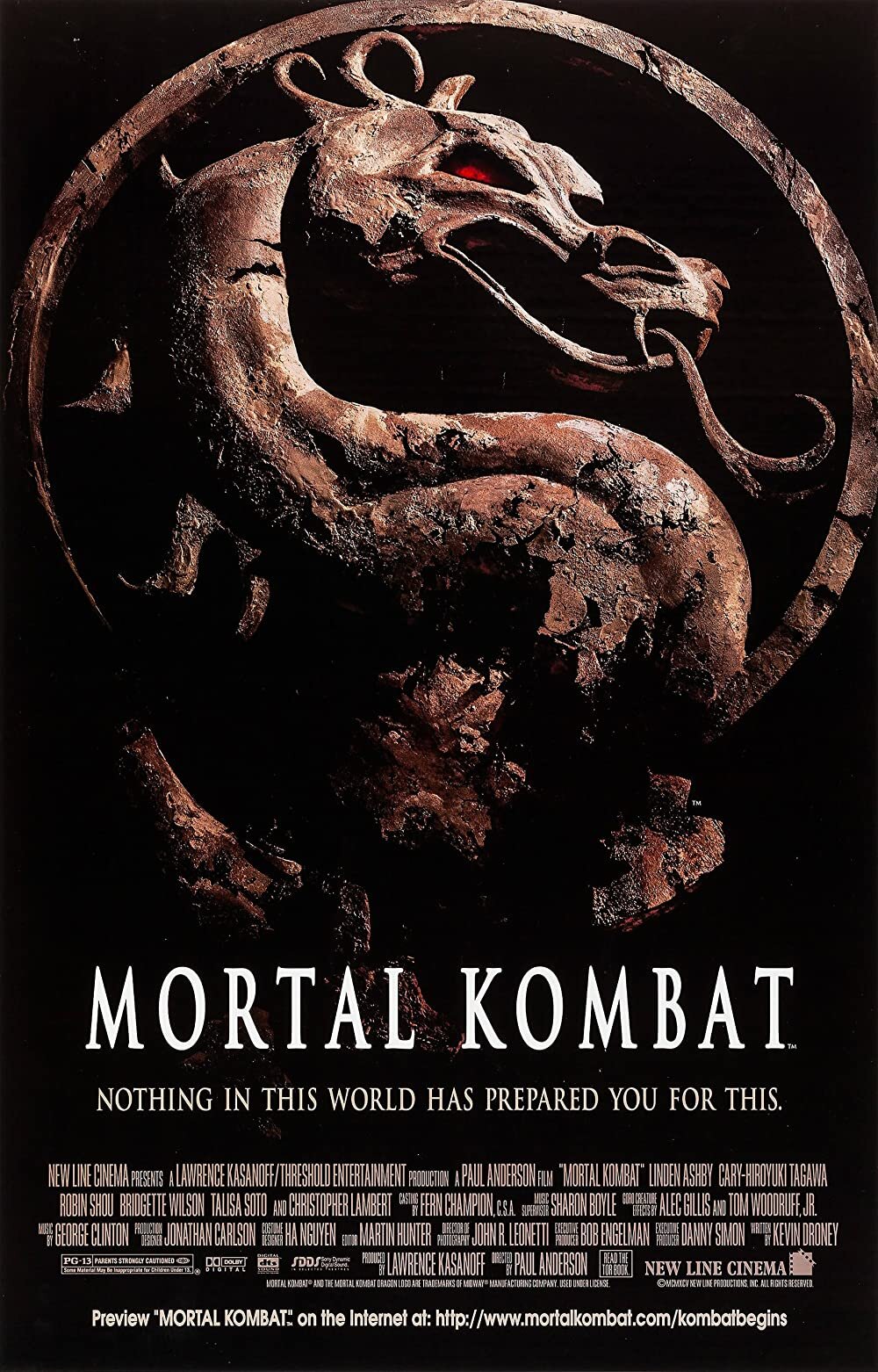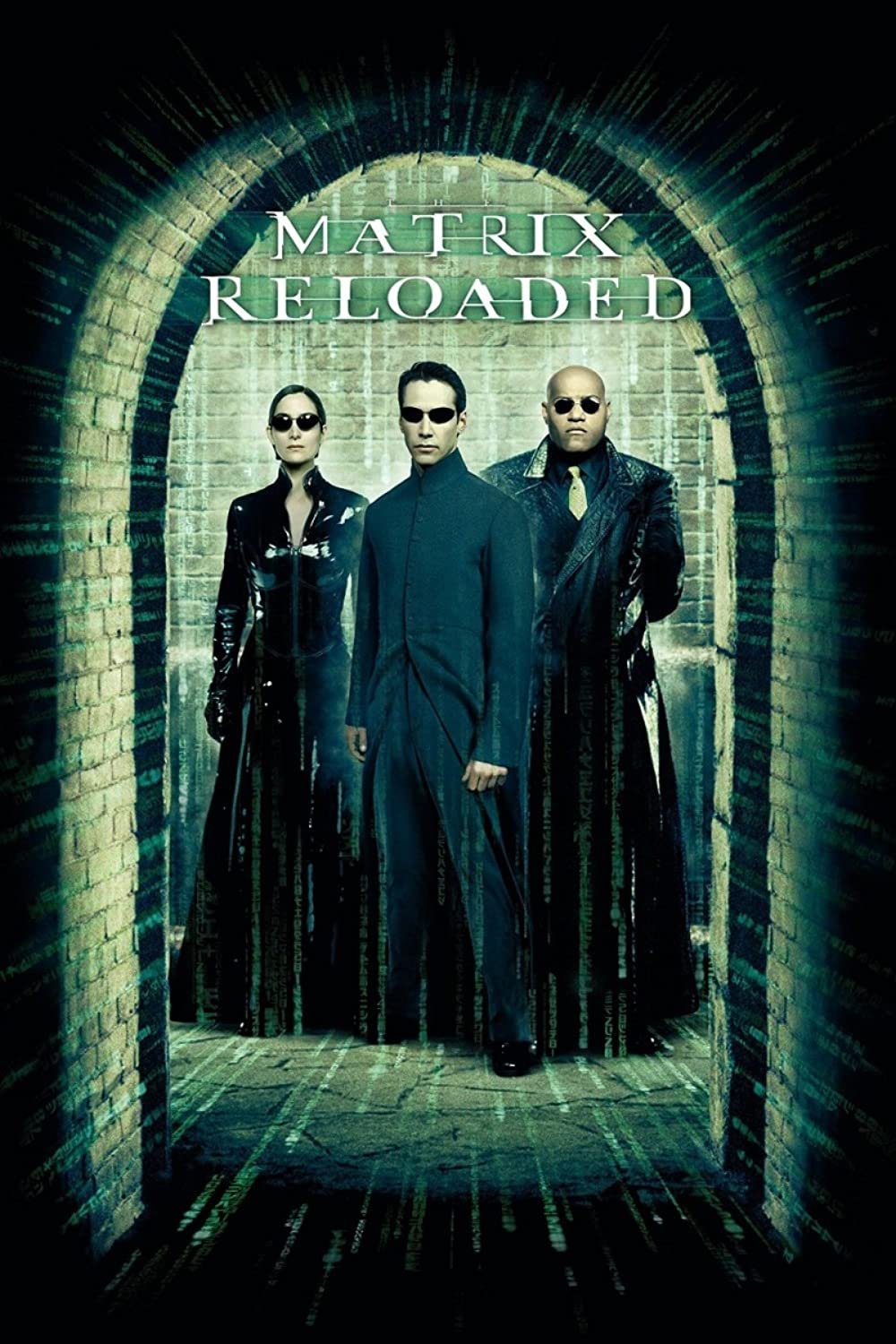Top 10 Best Martial Art Films
As perhaps one of the most underrated film genres, martial arts displayed on screen do not receive the praise they deserve. Besides requiring basic acting skills, they demand physical finesse and expertise in their fight sequences and innovative stunt work. Just look at what Bruce Lee did with the genre back in the 70’s in the cult classic “Enter the Dragon” (1973), Jackie Chan who introduced a more fluid style of fighting that emphasized life threatening stunts in “Project A” (1983) and “Police Story” (1985) and Jet Li’s take on the famous folk hero Wong Fei-hung in Tsui Hark’s “Once Upon a Time in China” (1991-1993) trilogy.
Sharing the same principals with musicals that require actors to train, act and occasionally perform their own ‘sequences’ in a convincing fashion, the genre might usually offer simple plots that are merely an excuse for a variety of skirmishes but the heyday of Hong Kong 80’s action films saw plots that extend beyond a final confrontation with a powerful master or assassin taken elements from other cinematic fields such as gangster, period and even comedy. Jackie Chan popularized that weird mix of action-comedy with his manic energy and showstopping stunts that remain to this day unmatched, is more a Charlie Chaplin/Buster Keaton version on steroids providing inspiring and jaw-dropping moments.
In Hollywood, the reluctance to use martial arts in a commercial film emphasized form and gorgeous bodies in the presence of an early 90’s Jean Claude Van Damme or in more light-hearted karate approaches with the appropriately titled “The Karate Kid” (1984). Even Steven Seagal’s introduction of Aikido with the brutal “Above the Law” (1988) lost quickly momentum as these films were just a vehicle for their stars and their ego rather than a display of stuntwork and well-crafted fight sequences. It was until “Mortal Kombat” (1995) and Chan’s smaller than usual effort with “Rumble in the Bronx” (1995) that audiences saw what the Hong Kong action style is all about until the inevitable explosion of wire fu antics with “The Matrix” (1999) and “Crouching Tiger, Hidden Dragon” (2000).
Now, the dominance of MMA around the world has brought a wider acceptance of sophisticated sequences that if used effectively, can give a film a whole new momentum (e.g., “The Raid” (2011), “John Wick” (2014)) and sometimes change the history of cinema.
Fight setting:
🤙🤙🤙🤙🤙
Fight choreography:
🤙🤙🤙🤙
Stunts:
🤙🤙🤙🤙
Staging:
🤙🤙🤙🤙🤙
Realism:
🤙🤙🤙🤙🤙Craftmanship:
🤙🤙🤙🤙🤙
Best fight: Liu Kang vs Shang Tsung is superb but Liu Kang vs Reptile is top notch.
MVP: Robin Shou gives an exceptionally underrated physical performance.
Novelty: Micro-cameras use for contact fighting, first Western film to employ wires and Hong Kong style of action.
10. Mortal Kombat (1995)
Director: Paul WS Anderson
Genre: Martial arts fantasy
The first adaptation of “Mortal Kombat” has an extravagant production design, exotic locations and luscious cinematography that do the game’s mythology and atmosphere justice. Being the first western film to display Hong Kong style choreography, “Mortal Kombat” put a lot of effort to create a series of brutal fights that still feel fresh today supported by Anderson’s frenetic direction, aggressive stuntwork and career high performances, particular by Cary Hiroyuki Tagawa who IS Shang Tsung and Christopher Lambert who brings European flair to the proceedings. The iconic metal/techno soundtrack and the mesmerizing ethnic score of George S. Clinton are the icing on a deliciously cinematic cake that cares about having fun without insulting the audience’s intelligence.
Fight setting:
🤙🤙🤙
Fight choreography:
🤙🤙🤙🤙🤙
Stunts:
🤙🤙🤙
Staging:
🤙🤙🤙
Realism:
🤙🤙🤙Craftmanship:
🤙🤙🤙🤙🤙
Best fight: The chateau fight has seamless wire work and complexity under a wonderful track by Rob Dougan.
MVP: Keanu Reeves. His numerous fights have him doing incredible pirouettes and moves with the grace of a kung fu champion.
Novelty: A three way fight inside a car was something that we have not seen before, but fighting the same person 100 times was groundbreaking.
9. The Matrix Reloaded (2003)
Director: Lana and Lilly Watchowski
Genre: Science fiction action
While technically the hotly anticipated sequel of “The Matrix” (1999) belongs to the realm of science fiction, its extensive usage of martial art sequences make it a superb contender. Raising the dramatic stakes with more creative and complex action sequences that to this day remain unmatched, “The Matrix Reloaded” contains copious amounts of ambitious skirmishes that although they might be a poor excuse for a lavish display of movements, are nonetheless impressive. The infamous Burly Brawl (despite its pretty obvious CGI), is a masterclass in action design and the chateau melee fight is a testament of the Watchowski’s skill to craft unique and single take Hong Kong fights that benefit from an oversized budget. Despite bearing a hollow feeling occasionally with its pseudo-quasi existentialism and endless philosophical debates, it remains an achievement in action filmmaking.
Fight setting:
🤙🤙🤙🤙
Fight choreography:
🤙🤙🤙🤙🤙
Stunts:
🤙
Staging:
🤙🤙🤙🤙
Realism:
🤙🤙🤙🤙🤙Craftmanship:
🤙🤙🤙🤙
Best fight: Bruce vs O’Hara - simple, effective and on point.
MVP: Bruce. Lee.
Novelty: Using dynamic settings to fight the bad guy was something that expanded the stakes and created one of the most iconic film moments of all time.
8. Enter the Dragon (1973)
Director: Robert Clouse
Genre: Martial arts
The film that gave birth to “Mortal Kombat” featured novel for the time sequences under the direction and command of Bruce Lee. “Enter the Dragon” might have a straightforward story in its core but it is really an excuse if you will, for Bruce Lee to display incredible martial art prowess in several one on one matches in a forbidden tournament, surrounding himself by memorable characters and an appropriately groovy 70’s soundtrack. Made at a time when films did not rely on world building or complex scripts for their action plots, “Enter the Dragon” boasts awesome one liners and wicked face offs with a Bruce Lee at his creative peak that explored a more refined and sophisticated approach in this genre, focusing on fine athletic form and skill rather than cheap thrills. His final showdown with Han is one for the ages but his clash with countless goons that Lee dispatch with ease under the use of various weaponry is the stuff that cinematic legends are made off.
Fight setting:
🤙🤙
Fight choreography:
🤙🤙🤙🤙🤙
Stunts:
🤙🤙🤙🤙🤙
Staging:
🤙🤙🤙
Realism:
🤙🤙🤙🤙🤙Craftmanship:
🤙🤙🤙🤙
Best fight: Shopping mall fight, hands down.
MVP: Jackie Chan - who else?
Novelty: The extremely dangerous stunts with a blatant disregard for safety. A landmark in action filmmaking.
7. Police Story (1985)
Director: Jackie Chan
Genre: Action crime
Moving away from his Beijing opera routes (although his transition started slowly with “Project A” (1983)), “Police Story” is perhaps what put Jackie Chan on the map demonstrating a more convincing and street style fighting approach. While Sammo Hung introduced something similar way earlier (and with Jackie), Chan directs extensive action sequences and stunts on a larger scale placing himself front and center of excessively dangerous set pieces and simultaneously making the most of environments that come handy for several fist and kick skirmishes as a warrior version of Charlie Chaplin. By the time “Police Story” culminates to a full out brawl in a shopping mall, you will be witnessing a timeless and one of the best (and dangerous) action sequences ever filmed.
Fight setting:
🤙🤙🤙
Fight choreography:
🤙🤙🤙🤙🤙
Stunts:
🤙🤙🤙🤙🤙
Staging:
🤙🤙🤙
Realism:
🤙🤙🤙🤙Craftmanship:
🤙🤙🤙🤙
Best fight: The fight in the weapon antique corridor is funny and brutal at the same time.
MVP: Keanu Reeves doing convincingly 90% of his stuns at his 50s is to be commended.
Novelty: There is a horse chase, an aforementioned fight in a weapon antique corridor and an extended gun battle involving dogs. Consider multiple novelty points checked.
6. John Wick Chapter 3: Parabellum (2019)
Director: Chad Stahelski
Genre: Action
Similarly to “The Matrix Reloaded”, the “John Wick” franchise (2014-2023) is not a pure addition to the genre. Yet each entry saw incorporating more and lengthier brawls that bore increasing martial arts complexity. Now in its third outing, “John Wick Chapter 3: Parabellum” came out swinging and offered plenty of varied and exquisitely choreographed action set pieces that pushed its lead icon to his limits: a fight in a weapon antique corridor is to die for while a motorcycle chase (taking cues from the Korean film “The Villainess” (2016)) sees Wick effortlessly dispatching foes by any means necessary. Despite its potential lack of irony towards its overloaded finale that sees a vertical increase in the body count, it is a far out action extravaganza with John Wick being a lethal version of Jackie Chan: he uses whatever he get his hands on to plow his way through a variety of colourful opponents with the grace and stoicism of an introvert poet.
Fight setting:
🤙🤙🤙
Fight choreography:
🤙🤙🤙🤙🤙
Stunts:
🤙🤙🤙
Staging:
🤙🤙🤙🤙
Realism:
🤙🤙Craftmanship:
🤙🤙🤙🤙
Best fight: The face off with the Beast is thrilling and hilarious.
MVP: Yuen Qiu, an absolute legend with impeccable comic timing.
Novelty: While the two Harpists fight is a visual treat offering something we have not seen before, the inclusion of “Looney Tunes” gags in seamless fashion attracted worldwide acclaim.
5. Kung Fu Hustle (2004)
Director: Stephen Chow
Genre: Action comedy
“Kung Fu Hustle” is one of these rare films that come once in a decade. In a combination of inventive “Looney Tunes” style of gags and “Kill Bill” (2003-2004) esque violence, director-writer-producer-main-lead Stephen Chow created a martial arts comedy for the ages. Paying smartly homage to several classics of the genre, each skirmish between the axe gang and the pigsty alley is unique, each segment more outrageous than the previous one. Yet Chow’s best and most hilarious film has a hefty heart at its center supported by an excellent cast of legendary martial artists (old and new) under the supervised choreography of the titan that Yuen Woo Ping is. Yuen Qiu and Yuen Wah in particular, steal the show as Landlady and Landlord, their appearances remaining the same no matter what circumstances they might find themselves into.
Fight setting:
🤙🤙🤙🤙🤙
Fight choreography:
🤙🤙🤙🤙🤙
Stunts:
🤙🤙
Staging:
🤙🤙🤙🤙🤙
Realism:
🤙Craftmanship:
🤙🤙🤙🤙🤙
Best fight: The face off between Jet Li and Donnie Yen is fantastic but the fight on the top of a still lake is an exercise in cinematic meditation.
MVP: Tony Ching - the film’s choreographer who created exquisite styles of fighting for each assassin.
Novelty: A defensive fight involving thousands of arrows is unparalleled.
4. Hero (2002)
Director: Zhang Yimou
Genre: Wuxia
Zhang Yimou’s extravagant epic is a dazzling spectacle; thousands of extras, unique, previously unseen and sweeping Chinese landscapes, a veteran cast and dynamic fights in poetically conceived settings under Christopher Doyle’s magnificent cinematography. Yimou’s first attempt to grapple with the Wuxia genre, sees him exploring fascinating individuals that fight for their beliefs instead of chasing stereotypical values such as glory, power and status employing Doyle’s lenses in clashes that resemble an ethereal ballet coming to life rather than gritty and visceral weapon fighting. Complemented by a grandiose production design and costumes which reflect the ambiguous emotions of the on-screen events, “Hero” does not only rely only on pure spectacle to seduce our minds but offers heavy and complex political and philosophical ideas that populate the film with substance.
Fight setting:
🤙
Fight choreography:
🤙🤙🤙🤙🤙
Stunts:
🤙🤙🤙🤙🤙
Staging:
🤙🤙
Realism:
🤙🤙🤙🤙🤙Craftmanship:
🤙🤙🤙🤙🤙
Best fight: Final fight with Ken Lo.
MVP: Jackie Chan. As usual (but Anita Mui as the stepmom steals the show).
Novelty: The exquisitely displayed in full force drunken boxing style. Brutal, funny and effective.
3. Drunken Master II (1994)
Director: Jackie Chan
Genre: Action comedy kung fu
The sequel to “Drunken Master” (1978) simply titled in English as “The legend of Drunken Master” has a nothing -to-write-home-about-plot just like its predecessor. However, what it lacks in story finesse, it makes up for it by delivering perhaps some of Chan’s best fights in his excessively long career in action cinema. Its several funny and extensive sequences of drunken boxing style that see Chan taking seemingly impossible poses to dispatch his opponents, are literally a masterclass in action staging culminating in a final nine minute fight that remains matchless to this day. Packed with superb stunts and a complimenting performance by the late Anita Mui (who appeared as well in Chan’s “Miracles” (1989) and “Rumble in the Bronx” (1995), “The Legend of Drunken Master” is pure popcorn cinema. Its action was so good that the British Film Institute selected this as one of the top ten action films of all time!
Fight setting:
🤙
Fight choreography:
🤙🤙🤙🤙🤙
Stunts:
🤙🤙🤙🤙
Staging:
🤙🤙🤙🤙
Realism:
🤙🤙🤙🤙🤙Craftmanship:
🤙🤙🤙🤙
Best fight: The final two-on-one fight is simple phenomenal.
MVP: A tie between Iko Uwais (who has the most fights) and Yayan Ruhian (who has the most dramatic ones).
Novelty: While “Merentau” (2009) did show some Silat before, “The Raid” demonstrated how brutal it can really be.
2. The Raid (2011)
Director: Gareth Evans
Genre: Action
Film Mining 101 has given a lot of praise for Gareth Evans’ “The Raid” since it is one of the best action films of all time that put on the map the cinematically effective (and brutal) style of Silat. Light on plot but remarkably heavy on suspense, Evans’ direction favours a Carpeteresque approach similar to “Assault on Precinct 13” (1976) where the story progresses from a simple bust to full out chaos. Yet, the film does not shine away from incorporating almost gory like violence and finisher moves in out-of-this-world fight sequences that would make “Mortal Kombat” envious. Amidst all this carnage, the film manage to find ways for minimalistic world building and intriguing (although simplistic) characters that have more than meets the eye. While Iko Uwais became a star, it is Yayan Ruhian who steals the show as Mad Dog, a smaller in stature bodyguard who can chew way more than he can bark!
Fight setting:
🤙🤙🤙
Fight choreography:
🤙🤙🤙🤙🤙
Stunts:
🤙🤙🤙
Staging:
🤙🤙🤙🤙🤙
Realism:
🤙🤙🤙Craftmanship:
🤙🤙🤙🤙🤙
Best fight: The Bride’s clash with the Crazy 88 is a showstopper moment in direction, finesse and visual panache but the clashes with Vernita Green and Elle Driver are so nasty and hardcore.
MVP: Uma Thurman convincingly kicking all types of ass across two films.
Novelty: Putting front and center a convincing action heroine in the not-so-mainstream martial arts genre and simultaneously opening a new chapter for female actors.
1. Kill Bill Volumes 1 & 2 (2003-2004)
Director: Quentin Tarantino
Genre: Martial arts
Quentin Tarantino’s martial arts epic homage includes a myriad of cinematic references and most importantly celebrates female action (anti-)heroes. His script can be seen as employing the traditional tropes of revenge but is not as straightforward as you might think. And being Tarantino, he drenches his 4th film with style, twists and nuanced layers for everyone involved in the catalistic event exciting curiosity and smartly building a fantasy world of assassins. The Bride is a force to be reckoned with but the more time we spend with her, the more human she becomes while the deadly viper assassination squad is oozing equally grace and menace. With career high performances (Thurman, Carradine, Liu and Hannah has never been better), a groovy soundtrack and brilliant orchestrated action from Yuen Woo-ping that could go toe to toe with “The Matrix Reloaded” in the same year, “Kill Bill” starts as an exercise of style over substance but quickly evolves to a personal conflict between two wounded individuals. It is a triumph of action and a beautiful tribute to Asian and Western action masterpieces that so far, none have managed to surpass or come even close.










